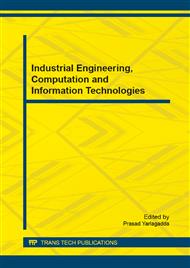p.261
p.265
p.270
p.274
p.279
p.283
p.288
p.293
p.297
Adaptive Radar Sensitivity Time Control Based on Linear Prediction Sea Clutter
Abstract:
Sea clutter is interference background in radar target processing. It is difficult to detect long-range weak target in sea clutter. Sea clutter signal changes complex, with high intensity. For close signal, radar receiver will overload and reach saturation point. We are interested in the most dynamic range for displaying target echo and fast changing component of clutter. By analyzing spatial and temporal correlation of sea clutter, slow changing component can be minus from sea clutter. The innovation of this paper is to propose a linear prediction error method for sea clutter to increase dynamic range of radar receiver. It prevents overloading and reaching saturation point at close range.
Info:
Periodical:
Pages:
279-282
Citation:
Online since:
December 2014
Authors:
Keywords:
Price:
Сopyright:
© 2015 Trans Tech Publications Ltd. All Rights Reserved
Share:
Citation:


